While many people have been focusing on recycling products, a better solution is to find a new purpose for them. Luckily, the internet has some genius ways to reuse everyday items at home to help reduce your waste.
Using products for longer is a better alternative to loading up your recycling bin. The sad reality is that most recycling plants cannot handle what they receive. Thus, much of it, even if it is recyclable, ends up in a landfill.
Coming up with creative uses for everyday home items is not only good for the environment, but it can also save you a lot of money. Let’s take a look at ways you can reuse items that you find in most homes.
1. Cardboard Boxes
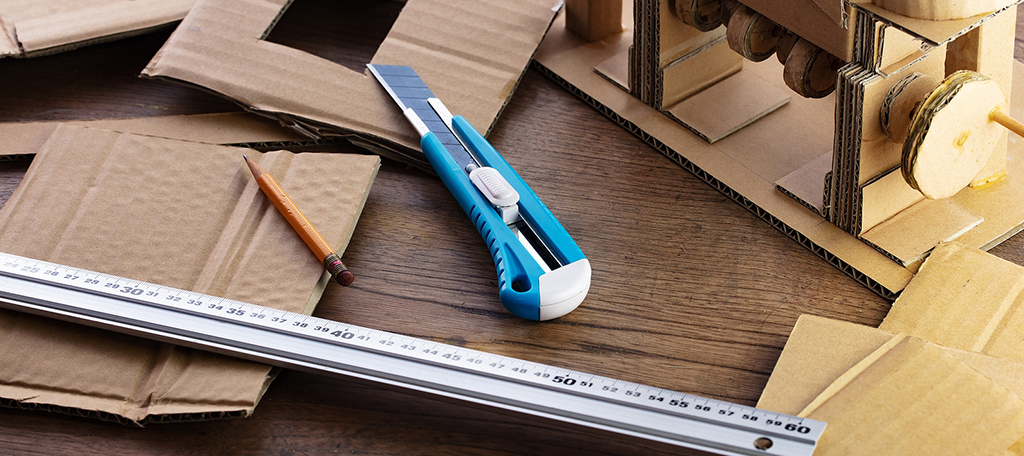
If you are like me, you probably get Amazon boxes delivered regularly to your house. That said, plenty of other products you purchase will also come in cardboard boxes, and while many are quick to dump them in a recycling bin, that is a big waste.
Cardboard is a great DIY building material. One such project you can take on with minimal trouble is building a cardboard shoe rack. All you will need is some tape and corner guards to assemble the unit.
While the shoe rack isn’t very nice to look at, it makes for a great addition to any walk-in closet where you might be keeping stacks of shoe boxes. It can also be used for things besides shoes, as long as they don’t weigh too much.
Just keep in mind that cardboard doesn’t handle water well. As such, you should avoid placing wet shoes after it has rained inside of the shoe rack. Otherwise, it may begin to smell and fall apart.
2. Bread Tabs
When purchasing a loaf of bread, you either get a metal and paper tie or a plastic tab. The tabs are the rectangular pieces of plastic that are used to keep the bag sealed. While most will immediately throw these in the trash or recycling bin, you can find other uses for them.
For example, do you have areas in your house where you need a power strip or surge protector for the extra outlets they provide? Probably. And if you are like me, whenever you need to unplug something, you always pull out the wrong cord.
Bread tabs can be used to prevent this from happening. Depending on the wire size, you should be able to place the bread tab around the wire itself. Then, you can simply write what the wire is for on the tab to help identify it.
For instance, you could write TV on the power cord for the TV, and so on. Alternatively, if you have a variety of colored bread tabs, you can create a color system where you can recognize the cord by the color of the tab.
Ties can also be extremely helpful to keep your wires organized behind a computer system.
3. Toothbrushes
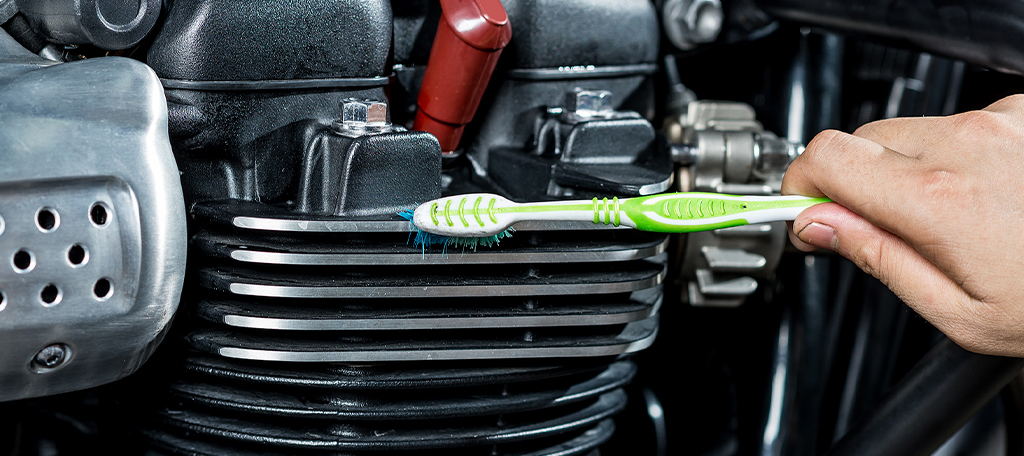
Dental hygiene is extremely important for your overall health, and if you listen to your dentist, you would know to regularly change your toothbrush every 3 to 4 months. This ensures the bristles stay firm enough to keep your teeth and gums clean.
Naturally, this means getting rid of your old toothbrush, which is also very difficult to recycle. While it may no longer be good enough for your mouth, that doesn’t mean it doesn’t have its uses around your home.
A toothbrush can be a great cleaning tool that you can use to scrub hard-to-reach places around your house or to clean smaller knick-knacks that are difficult to keep dust-free.
One of the best places to use your toothbrush for cleaning is by the sink. It is quite difficult to get your cleaning sponge in small areas where filth can build up around the handles and faucets.
4. Plastic Containers
Many products we buy today come in plastic containers that are often thrown out, but that is a waste. These containers can be washed and used to store all kinds of things that are often difficult to organize otherwise.
One of the most popular ways to use containers is to store screws, nails, bolts, and other small objects. You can write on the front of the containers with a marker to help you identify what is inside of it.
For example, if you have different-sized screws, you can sort them into an individual container and write the length of the screws on the front. In other cases, you can use the container as a potting plant. Better yet, if the container is clear, you can watch the plant root grow.
Another simple use would be to cut a coin-shaped hole at the top and use it as a bank to store your loose change. There’s an infinite number of possibilities when it comes to storing items in plastic containers, so get creative.
5. Coffee Containers
You would be hard-pressed to find a household that doesn’t drink coffee. And that means you’ll need to find a second use for your coffee containers, which admittedly have some similar uses to plastic containers.
During the winter, you probably need to salt your driveway and walkways around the house. Instead of lifting a big bag of salt, you can fill up a coffee container and poke holes in the lid to create a salt shaker.
This will help make sure the salt pellets are not stuck together, which happens way too often. You should also make sure that the holes are big enough for the salt pellets, or whatever substances you want to spread are large enough.
A screwdriver is a great tool to create holes with. The same premise can be used for other substances like sand, kitty litter, and so on. If you need to pour a substance over a large area, old coffee containers may just be your new best friend.
6. Milk Jugs
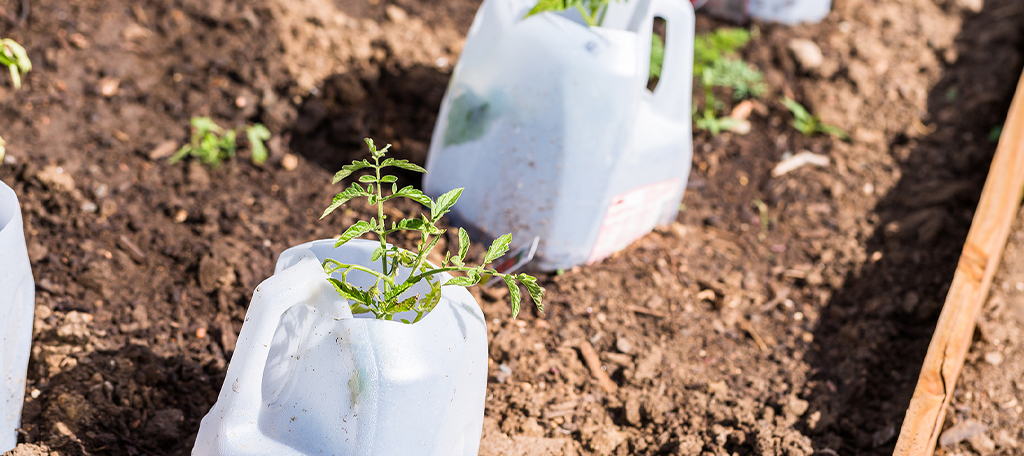
Milk is a great source of calcium and is a necessary ingredient in many recipes. As such, you will be hard-pressed to find a fridge that doesn’t at least have one gallon of milk in it at any given time.
Milk Jugs can be repurposed for a variety of uses around the house or yard. One such use is as a watering can after cleaning it out. Simply poke a few holes in the cap, fill it with water, and you can water your garden with it.
Another simple use is to cut off the top of the jug and fill it with some soil. You can grow a sapling plant inside of it that will be protected from small animals and insects, unlike if it were planted within the garden itself.
When the plant has reached a healthy size, simply cut the jug to safely remove the plant to replant in your garden. Don’t forget to wash and recycle what is left of the milk jug when you are done with it.
7. Egg Cartons
While the price of eggs may deter you from buying them regularly, egg cartons are a great everyday item from your home that you can reuse for multiple purposes. That is if you are trying to store items smaller than an egg.
If you celebrate Christmas, then you are aware that storing Christmas ornaments is a real pain and often ends with finding broken ornaments in the closet, or wherever you store them. Egg cartons can help.
If the ornament is small enough to fit in the egg cup, then it is a very safe storage device, and since many egg cartons can be stacked on top of each other, they can help tidy up where you store them.
Of course, you can store anything else that fits in an egg carton. Some other great options are screws, safety pins, picture hooks, bolts, and things of that nature.
You can also use them as small sapling pods to grow sprouts for your garden.
8. Magazines/Newspaper
While these may not be as common as they once were, there was a time when most households had a newspaper delivered to their home and you could find a variety of magazines in your mailbox every week.
This would often result in large stacks of paper in a closet or by the recycling bin. But there is a rather good way to reuse these items at your home, wrapping paper. Why spend money on wrapping paper when you have it at home?
Newspapers and magazines can make for excellent wrapping paper that is free to use. And if you don’t have any, ask your neighbors.
Another excellent use is to use it to line your bird or pet cages.
You can also use it as packing material if you are going to move. Wrapping glass objects in a newspaper can help reduce any damage when being transported, or you can use it to fill empty spaces in a box to prevent objects from hitting each other.
9. Old Towels
Depending on how much you use them, towels should be replaced every one to five years before they start to feel scratchy, tear, or the colors fade. However, just because you might not want to use them on your body anymore, doesn’t mean they aren’t useful.
One simple use for them is to give the towels to your pet. If you have a pet cage for your dog, throwing in an old towel is a great way to add some cushion for them, if you don’t already have a bed.
Alternatively, you can turn old towels into rags. Simply take a pair of scissors and cut them to the desired length. You can use them as cleaning rags for around the house, use them as rags to dry your car after a wash, or even use them when you go fishing.
Another way to reuse old towels is to cut them into strips that you can use to bundle other items. For example, if you have some leftover PVC pipe, you can use the towel strips to tie them together for better storage.
10. Jeans
As we wear our jeans, they eventually become faded or rip over the years. And while many will opt to either throw them out or try donating them, another approach is to use them as material for your DIY projects.
For example, you can turn your old jeans into a denim jacket. There are several guides online that outline the process and teach you how to disassemble your jeans and put them back together like this one for a denim jacket.
Another creative idea is to make a denim tote bag. You can use this when you go shopping instead of buying a reusable grocery bag yourself. This is also much easier than making a denim jacket, so it’s perfect for beginners.
There are also some smaller projects like covering a bookmark in denim to add a bit of flair or creating denim dining mats for your dinner table. If you have a knack for sewing, you can do some creative things with your old jeans.
11. Paper Towel Rolls
When you finally get to the end of a paper towel roll, you will hit the cardboard tube at the center. While this is where most will throw it out, the creative ones among us will be able to reuse it within their home.
If you are like me and have a ton of old electronic devices, like game systems that you don’t want to part with, storing them can be frustrating due to all of the wires, but that’s where the cardboard tube comes in.
If you wrap the wire correctly, you can slide it into the tube and write what device the wire belongs to on the tube. For Instance, you can take all of the wires for your PlayStation 2, slide them into the tube, and write “PS2” on it.
You can also do the same thing for your Christmas lights or any other wire. It is far more effective than trying to put them all into one box and playing the wire roulette game to see which one fits in a device after 10 years.
12. Squeezable Condiment Bottles
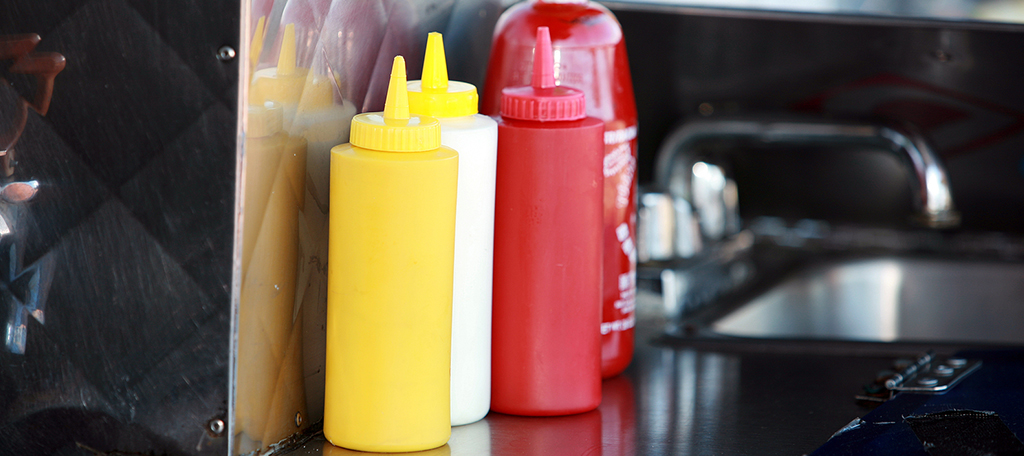
Ketchup, mustard, jelly, and other condiments all come in squeezable bottles nowadays, and most of us are quick to add them to the recycling bin. However, there may be better uses for them in your kitchen.
For instance, if you love pancakes as much as I do, you’ll know it can sometimes be hard to make them perfectly round when using a big spoon. Instead, clean out your condiment bottles and put the pancake batter into it.
You can then squirt the batter into the pan to get them perfectly sized. This is also very convenient if you are going camping, as you can bring the batter with you so it’s ready to go in the morning for a delicious breakfast with the kids.
Another use could be for icing or whipped cream for your desserts. As long as you can get the substance into the condiment bottle, and it can be squeezed out, there’s no wrong way to approach this.
13. Bread Bags
If you were to look at the groceries you could find in any home, I think most would be hard-pressed to find a household that doesn’t have a loaf of bread in it. While we already talked about what you can do with the bread tabs, let’s now look at the bags.
Bread bags are thin plastic bags that can be reused for a variety of purposes. One such use is when you take your dog out for a walk. They can work as a great poop bag if you are in a pinch.
Another creative use is to fill them with water and secure the top of the bag. Then stick it in the freezer, and you have made a block of ice you can add in your cooler, or break it up to use in drinks.
Yet another option would be to use it as a marinating bag, where you could place the meat while adding the marinade and sealing the top of the bag. Once it is ready, you can take the meat out and might even be able to wash the bag for another use.
14. Mesh Produce Bags
If you’ve ever bought a dozen oranges or onions, you’ll notice that they often come in a mesh produce bag. You will also see these regularly at farmer’s markets. Regardless, you will find these in most homes.
And they are often thrown out once that produce is eaten or starts rotting. These produce bags are a great item to reuse around your house for a variety of things. For instance, if you bunch it up into a small ball, it can act as a scrubber.
Got a greasy pan? Don’t destroy your sponge; use the mesh produce bag to get it clean. You can also use this to clean the bathroom. Of course, you could just use it again to store items in a bag.
For example, if you use dryer balls, you can store them in a mesh produce bag in the laundry room. You could also just use them to store baseballs, tennis balls, or anything that won’t fall through the holes in the mesh.
15. Tissue Boxes
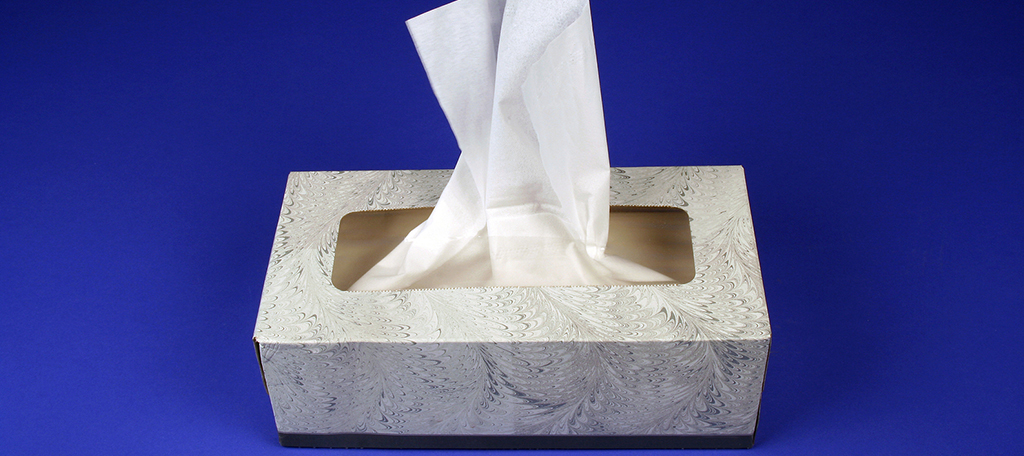
If you catch a cold, you’re most likely going to need some tissue. Instead of throwing away that box, you can reuse it for a variety of storage options that can fit throughout your home.
For example, when you go grocery shopping, you most likely come home with a bunch of plastic bags, unless you live in a state with a plastic bag ban. Storing those bags can often be a real hassle that generally ends up with you placing them all inside another bag.
Instead, you can take a few minutes to slide part of the bag into the handles of another bag to create a line of bags, then carefully pack that bag line into the tissue box. The result is creating a bag box where you can pull out one plastic bag at a time.
Another simple option to reuse it is to cut off the top of the box and use it as a drawer divider. For example, if you were an avid Lego collector, you could use the boxes to store different Lego bricks or anything that fits in them.
16. Butter Wraps
If you buy sticks of butter they often come in plastic wraps that can help you easily measure the butter if you are cutting them. That said, if you leave the bag intact, it can have a great use.
If you bake often and don’t want to use any of the butter spray cans, then you are going to be using the butter itself to grease the baking pans. The butter wraps were made specifically to hold butter. As such, they are a great way to grip the butter when greasing the pan.
Normally, you would probably use a piece of paper towel, but the butter wrap can be washed and used multiple times, which makes it the best option. You can also make it work as a butter brush if a recipe calls for one.
Another option is if you are making your own burger patties. You can use the butter wrappers to separate the patties in your freezer. This prevents them from getting stuck together and can help save space.
17. Packing Peanuts
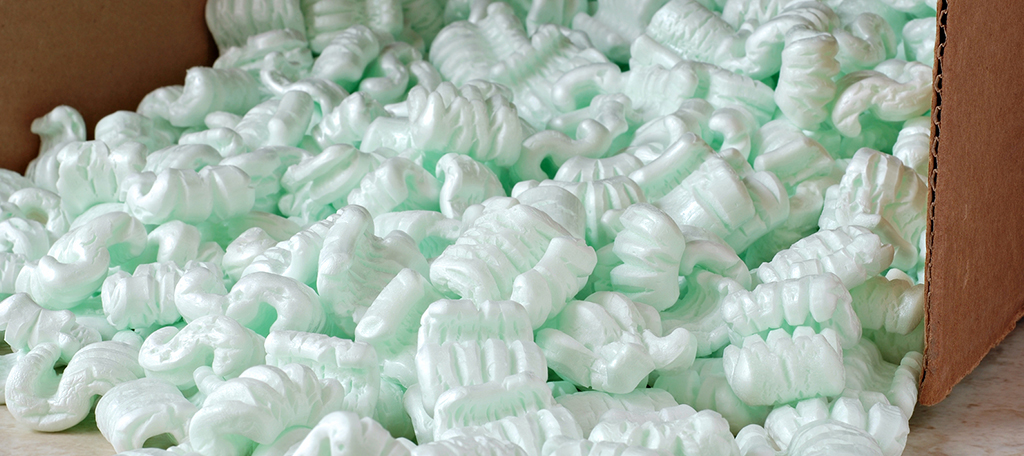
When ordering fragile items online, you will often receive a box full of packing peanuts to help prevent or minimize any damage your purchase will sustain. Packing peanuts are rather difficult to recycle, as you usually can’t just place them inside of your recycling bin.
Instead, most recycling centers cannot process them. Your only option is to contact shipping companies that can have them recycled. However, before you do that, consider using them at your home.
One creative use is if you are planting something in a large plant pot, you can fill the bottom of it with packing peanuts. This not only requires you to use less soil but creates better drainage at the bottom.
If you don’t have much of a green thumb, another creative use for them is to build your own bean bag. Packing peanuts are quite soft and make for an excellent filler material.
18. Wine Corks
Cracking open a new bottle of wine is always so satisfying. When it’s gone, you’ll most likely throw out the cork used to seal the bottle. Bt what if I told you to hang on to it? Well, you should because it has a lot of uses.
If you do a lot of home renovations or work as a carpenter, you will undoubtedly end up using caulk to seal gaps and cracks. And once you open up the caulk container, you can’t seal it easily, which is why a lot of folks will use screws or something similar.
However, a wine cork can do it just was well.
You can use the cork to seal the caulk and prevent it from hardening inside the tube. Now if you don’t use caulk, there are other uses.
For example, if you collect wine corks, eventually you will have enough to build a cork bulletin board.
All you need to do is glue them together and you can pin messages and tasks on it. Be sure to ask your friends and family to save their corks to make them bigger. Another use is to dip them in rubbing alcohol to use them as a fire starter when camping.
19. Bubble Wrap
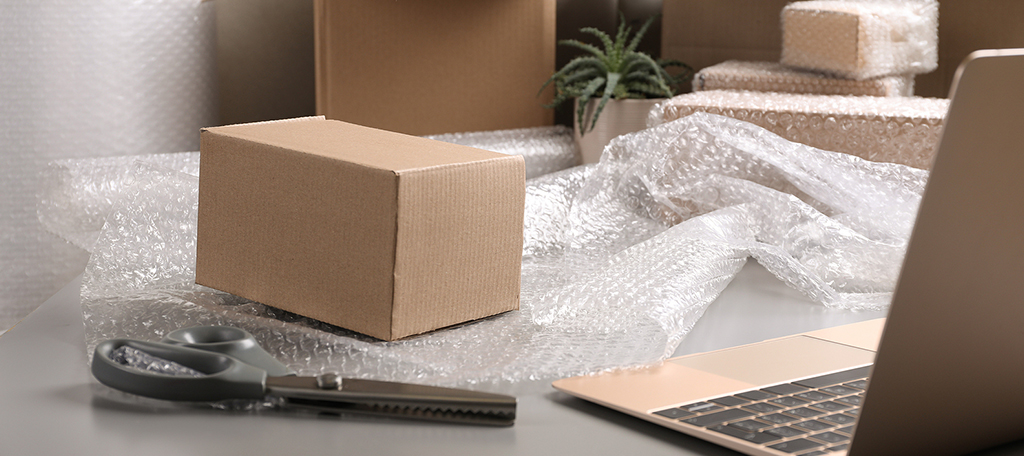
If you just finished moving or ordered some delicate goods online, then odds are you have some leftover bubble wrap. While many will pop the bubble for their amusement, there are some better options if you want to get more use out of it.
For example, if you have ever spent an extended amount of time raking the yard, you may have earned yourself a callus on your hand. Bubble wrap can help prevent this by using it as a makeshift grip.
This isn’t raking exclusive. You could also apply the same idea to any yard tool like a broom, shovel, or anything of the sort.
Another way to reuse bubble wrap in your home is to line your drawers with it. This is a great option for your refrigerator. This can help prevent getting the drawer itself dirty, and add cushion for your produce or eggs that were stored loosely.
Bubble wrap can also help to childproof sharp corners around your house.
Start Reusing Everyday Home Items Today
As you can see, if you are creative enough, there are a ton of ways to reuse items from around your home. Doing so will not only help reduce your carbon footprint, but it can also save you a lot of money.
Just keep in mind that you should carefully clean out anything you plan on reusing when it comes to handling food. Failure to do so could result in some serious health concerns, such as poisoning.
I hope you found some new uses for products around your house that can lower your carbon footprint.
Which item are you excited to reuse at home? Do you have a creative way to reuse something not on this list?


